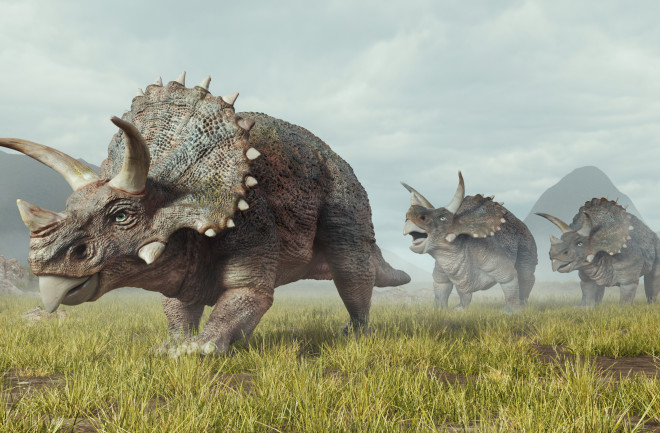Imagine living in a world with a bus-sized “three-horned face” dinosaur that has epic battles with an intimidating carnivore like the Tyrannosaurus rex (or so the legend says). From all we’ve gathered so far, it is not hard to see that Triceratops horridus, also known as Triceratops (genus), is a distinct beast.
Triceratops is a quadrupedal dinosaur of the ceratopsian family – herbivores from the Cretaceous period with a bony frill and distinct beaklike bone. They used to live in western North America, in an area now composed of arid prairie and badlands. At least, this is where triceratops fossils have been extensively found.
Paleontologist O.C. Marsh officially classified it in 1889. But only after other scientists mistook it for a bison, given its size and anatomic similarities. Scientists believe the Triceratops measured approximately 30 feet long, weighing about 12,000 to 16,000 pounds.
Interesting Facts About Triceratops
Whether you are a dinosaur enthusiast or not, let’s face it, we are still uncovering a lot of mysterious aspects about these fascinating creatures! Here are five intriguing facts about T. horridus you should know.

